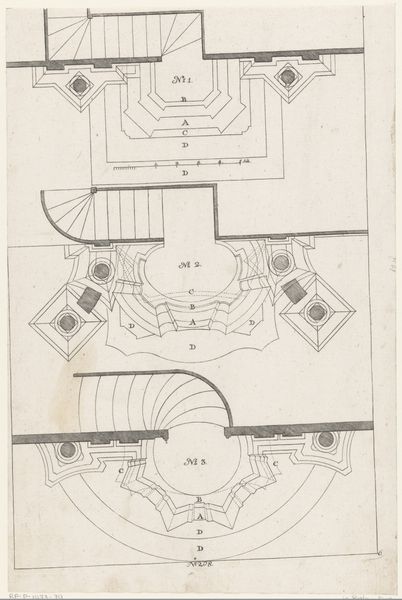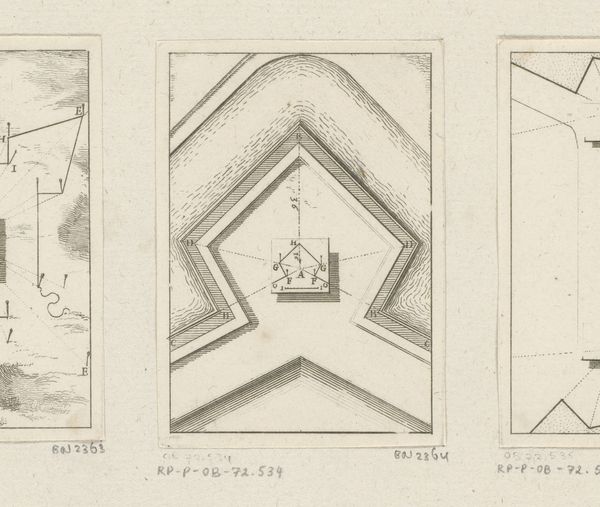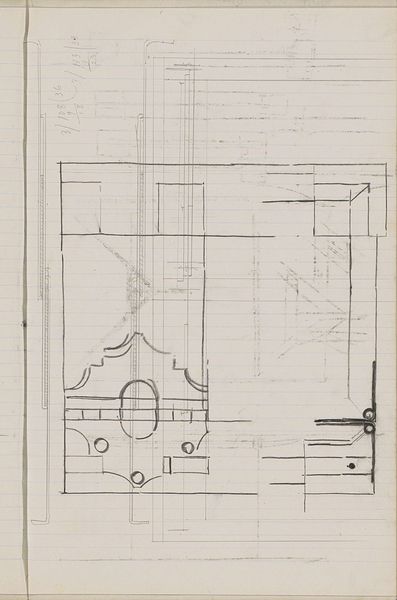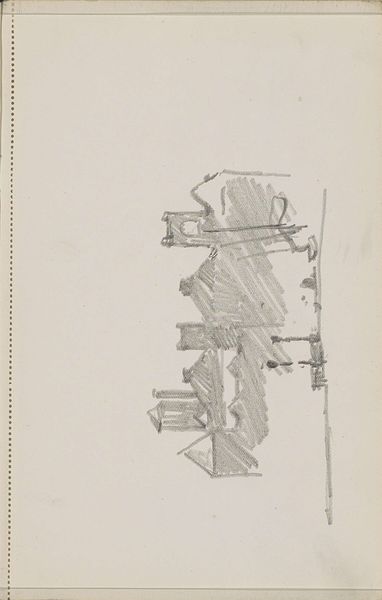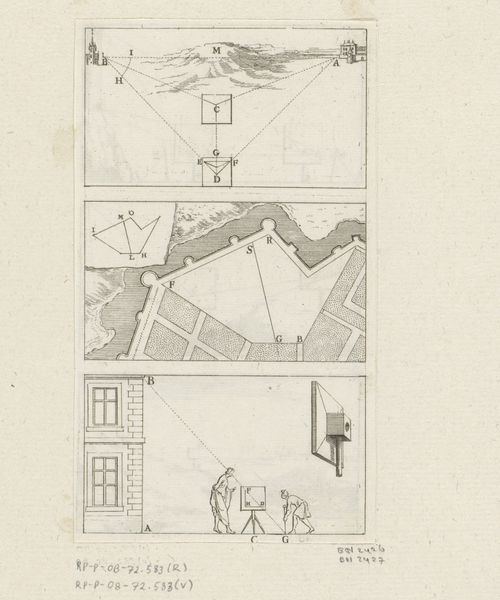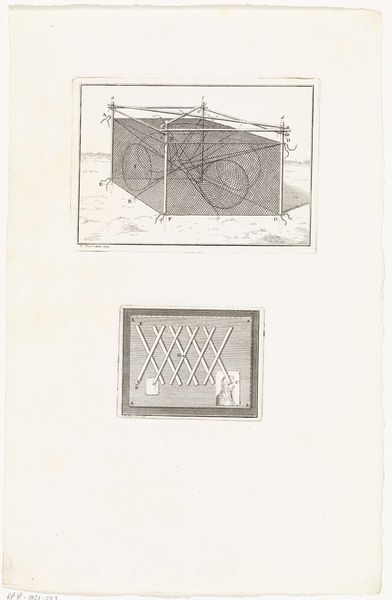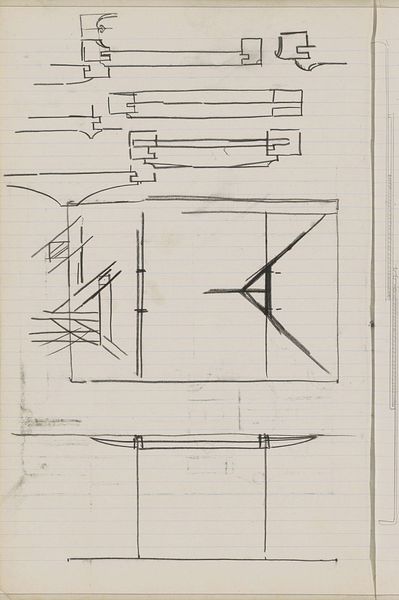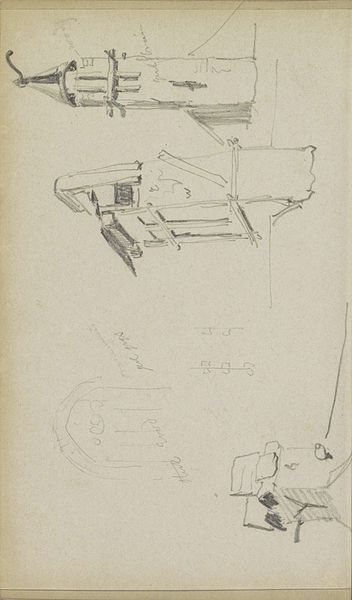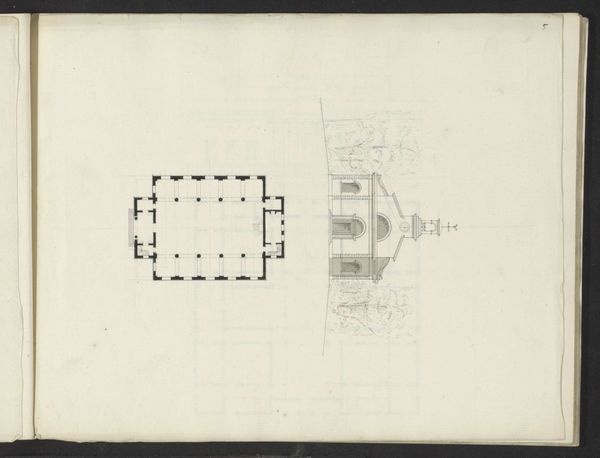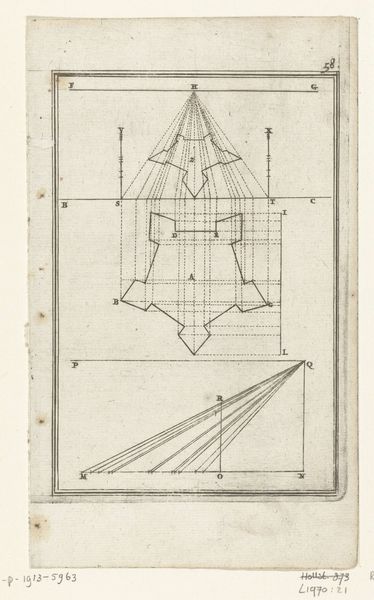
drawing, print, engraving, architecture
#
drawing
# print
#
perspective
#
geometric
#
academic-art
#
engraving
#
architecture
Dimensions: height 153 mm, width 87 mm
Copyright: Rijks Museum: Open Domain
Curator: Sébastien Leclerc I created this engraving around 1690. It's called "Gebruik van de halve cirkel geillustreerd", which translates to "The use of the semi-circle illustrated." Editor: Immediately, I’m struck by the almost clinical precision of it. The crisp lines and geometric forms evoke a sense of order and control, though it also feels rather sterile, detached from human experience. Curator: That precision is intentional. Leclerc was illustrating the geometric principles of perspective as they relate to architecture and fortifications. This wasn't meant to be emotional or expressive in the way we might consider modern art. Editor: Still, the choice of the semi-circle—or rather, its strategic deployment—implies a desire for harmony and wholeness. Geometry, especially in this period, carried symbolic weight, linking mathematical ideals to ideas about social order, perhaps even divine design. Curator: Absolutely. The print reflects a society grappling with advancements in mathematics and science, aiming to systematize knowledge and assert control over space and construction, as well as over territories during a very warlike period of expansion and conquest. Editor: I notice the different panels: the first shows an aerial view, moving to geometric patterns underlying the representation of space, culminating in these schematics of fortifications. Curator: The artist is breaking down the stages of translation from reality into calculated representations. It’s worth thinking about who the imagined viewers for this piece would be – who was invited into that circle of knowledge? Military engineers? Architects? The educated elite? Editor: I would guess the last, especially because these calculated representations gave them not only understanding, but symbolic power as well. The semi-circle becomes a tool for domination, both intellectually and militarily. I like how we can read a practical image, ostensibly on construction, as loaded with social history. Curator: Ultimately, this engraving is an invitation to consider how visual languages and spatial relationships reinforce hierarchies of power and expertise, not just in art, but also within broader social and historical structures. Editor: I now see these geometries as almost palimpsests, with each level carrying specific political meanings.
Comments
No comments
Be the first to comment and join the conversation on the ultimate creative platform.

